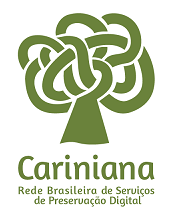The Brazilian Hinterland as Gothic Space in “O Caso Inexplicável da Orelha de Lolô”, by Bernardo Élis
DOI:
https://doi.org/10.5433/1678-2054.2013v26p95Keywords:
Fantastic literature, Brazilian literature, Regionalism, Colonial gothicAbstract
As a descriptive image/concept of a spacial locus/geography/region that, among other readings, is represented in the form of a foreign land to Brazilians themselves or as the locus of huge social diferences within the country, the Brazilian hinterland becomes, as this article intends to demonstrate through the analysis of the short story “O caso inexplicável da orelha de Lolô” (1944), by Bernardo Élis, an appropiate setting to the manifestation of narratives that share similar elements with the ones found in Anglo-American Gothic Literature, marked by the rationalistic discourse from cultural and economic élites against marginal areas and groups.Downloads
References
BORGES FILHO, Ozíris. Espaço e Literatura: Introdução à Topoanálise. Franca: Ribeirão Gráfica e Editora, 2007.
BOSI, Alfredo. História Concisa da Literatura Brasileira. 47ed. São Paulo: Cultrix, 2006.
BOTTING, Fred. Gothic. London: Routledge, 1996.
BURKE, Edmund. Uma Investigação Filosófica sobre a Origem de nossas Idéias do Sublime e do belo. Trad. Enid Abreu Dobránszky. Campinas, SP: Papirus Editora, 1993.
CARROLL, Noël. A Filosofia do Horror ou Paradoxos do Coração. Trad. Roberto Leal Ferreira. Campinas, SP: Papirus, 1999.
CESERANI, Remo. O Fantástico. Trad. Nilton Cezar Tridapalli. Curitiba: Editora UFPR, 2006.
DURAND, Gilbert. As Estruturas Antropológicas do Imaginário. São Paulo: Martins Fontes, 1997.
DOUGLAS, Mary. Pureza e perigo: Ensaio sobre a Noção de Poluição e Tabu. Trad. Sônia Pereira da Silva. Lisboa: Edições 70, 1991.
ÉLIS, Bernardo. O caso inexplicável da orelha de Lolô. Ermos e gerais. São Paulo: Martins Fontes, 2005. 175-190.
FAUSTO, Boris. O Pensamento Nacionalista Autoritário: 1920-1940. Rio de Janeiro: Jorge Zahar Editora, 2001.
IMLAY, Elizabeth. “The Brontës”. Marie Mulvey-Roberts, ed. The Handbook to Gothic Literature. New York: New York University Press, 1998. 27-30.
LIMA, Herman. Variações sobre o Conto. Rio de Janeiro: Ministério da Educação e Saúde, 1952.
LOBATO, Monteiro. “Bocatorta”. Urupês. 31ed. São Paulo: Editora Brasiliense, 1985. 100-112.
LOVECRAFT, H. P. O horror sobrenatural em literatura. Trad. Celso M. Paciornik. São Paulo: Iluminuras, 2007.
MILBANK, Alison. “Female Gothic”. Marie Mulvey-Roberts, ed. The Handbook to Gothic Literature. New York: New York University Press, 1998. 53-57.
NEEDELL, Jeffrey D. A Tropical Belle Epoque: Elite Culture and Society in Turn-of-thecentury. Rio de Janeiro. Cambridge: Cambridge University Press, 1987.
OLIVEIRA, Julvan Moreira de. “Matrizes imaginárias e arquetipais do negro como mal no pensamento educacional do ocidente”. Disponível em www.anped.org.br/reunioes/26/trabalhos/julvanmoreiradeoliveira.rtf. Acesso em: 10 jul. 2013.
POE, Edgar Allan. A Queda da Casa de Usher. O gato preto e outros contos. São Paulo: Hedra, 2008. 107-135.
ROSA, João Guimarães. Grande sertão: Veredas. 12ed. Rio de Janeiro: José Olympio, 1978.
SNODGRASS, Mary Ellen. “Colonial Gothic”. Mary Ellen Snodgrass. Encyclopedia of Gothic Literature. New York: Facts On File, 2005. 61-62.
WARWICK, Alexandra. “Colonial Gothic”. Marie Mulvey-Roberts, ed. The Handbook to Gothic Literature. New York: New York University Press, 1998. 261-262.
Downloads
Published
How to Cite
Issue
Section
License
Authors who publish in this journal agree to the following terms:
a) The authors retain the copyright and grant the journal the right of first publication, the work being simultaneously licensed under the Creative Commons Attribution-NonCommercial 4.0 International License, allowing the sharing of the work with acknowledgment of the authorship of the work and initial publication in this journal.
b) Authors are authorized to assume additional contracts separately, for non-exclusive distribution of the version of the work published in this journal (eg, publish in an institutional repository or as a book chapter), with acknowledgment of authorship and initial publication in this journal.
c) Authors are allowed and encouraged to publish and distribute their work online (e.g. in institutional repositories or on their personal page) after the editorial process, as this can generate productive changes as well as increase impact and citation of the published work (See The Effect of Open Access).
d) The authors of the approved works authorize the journal to, after publication, transfer their content for reproduction in content indexers, virtual libraries and the like.
e) The authors assume that the texts submitted for publication are of their original creation, taking full responsibility for their content in case of any objection by third parties.


















